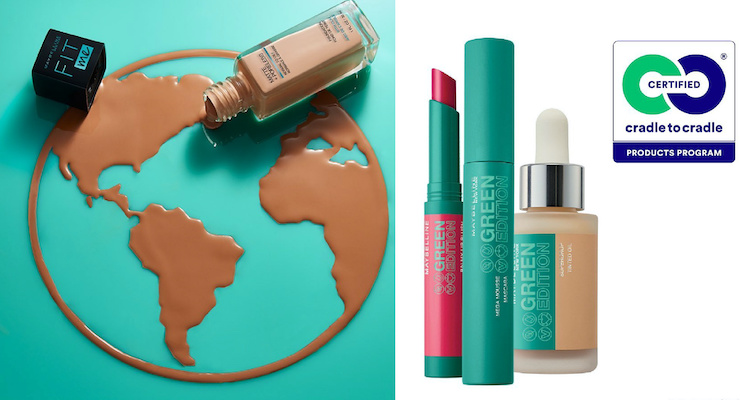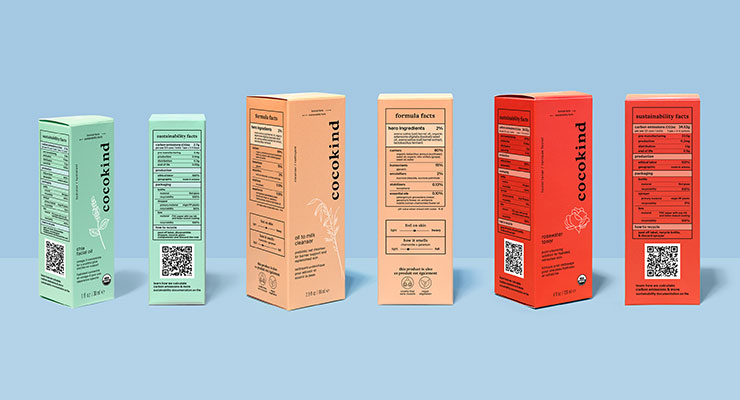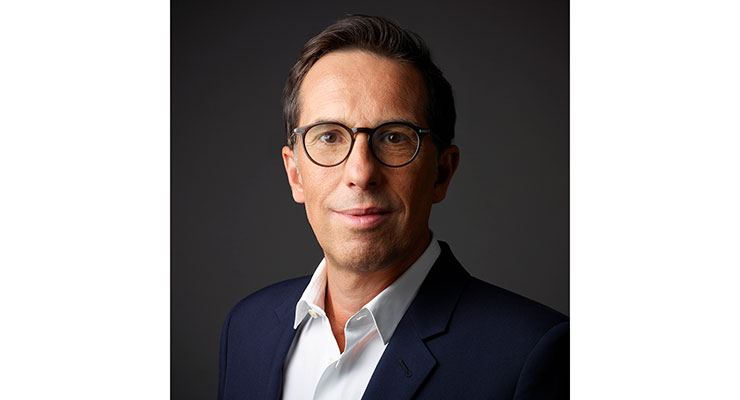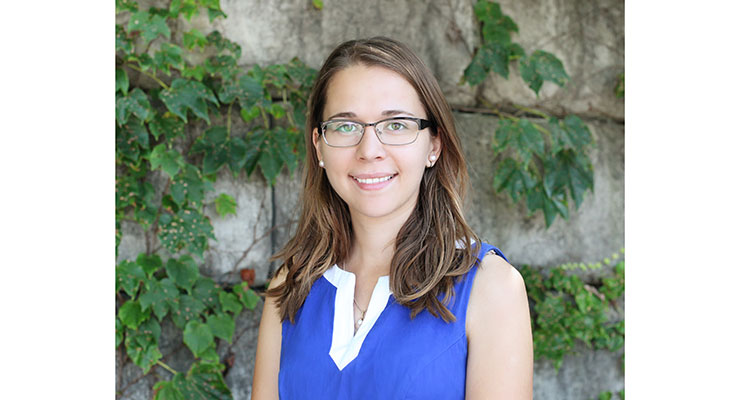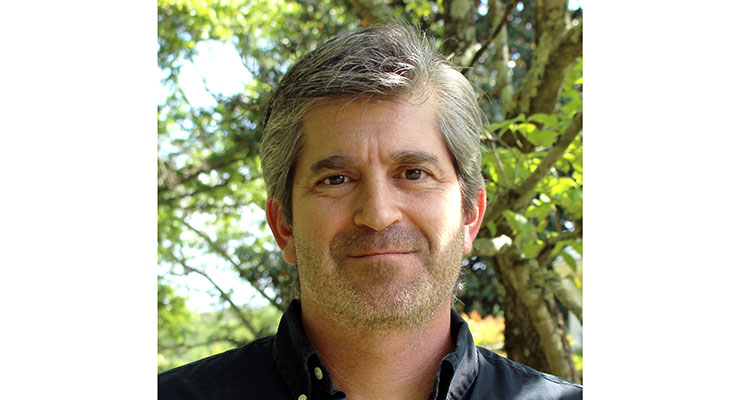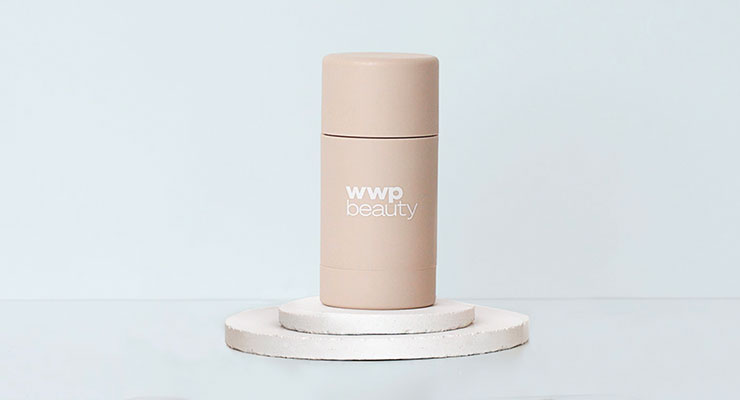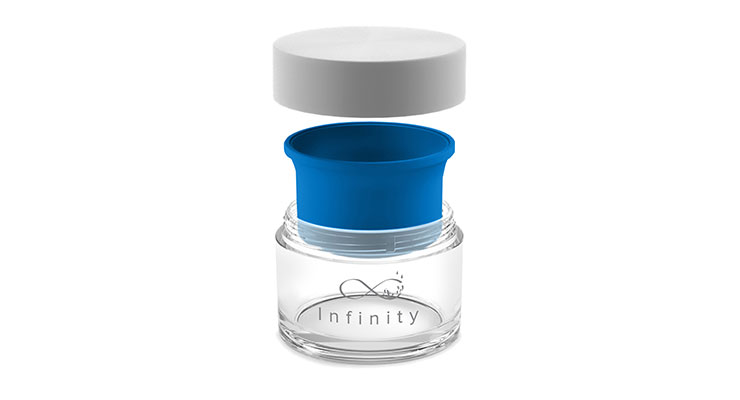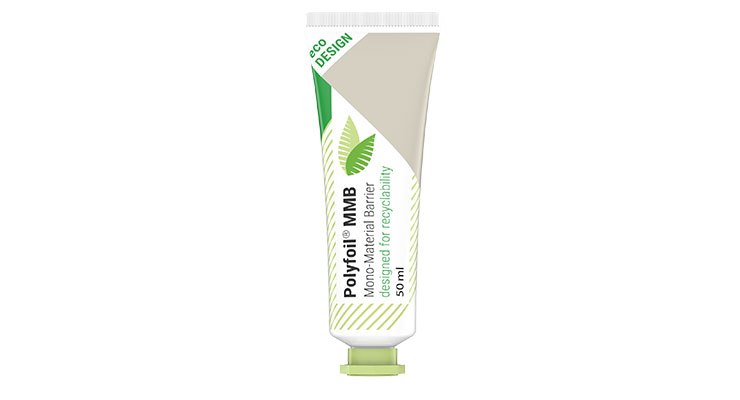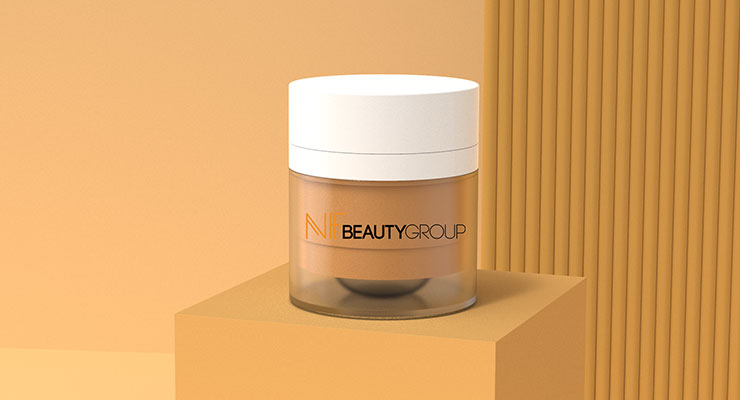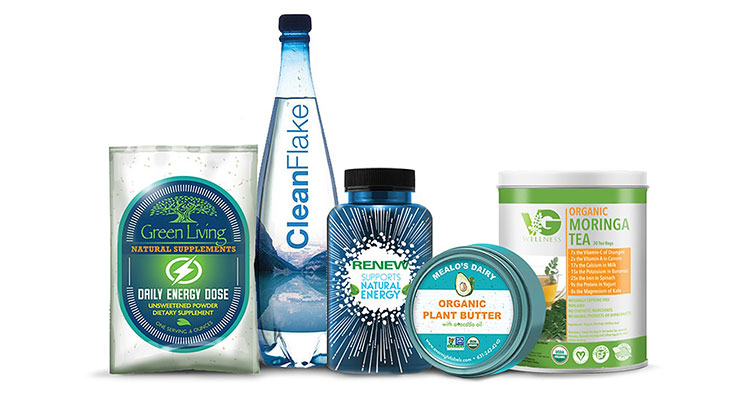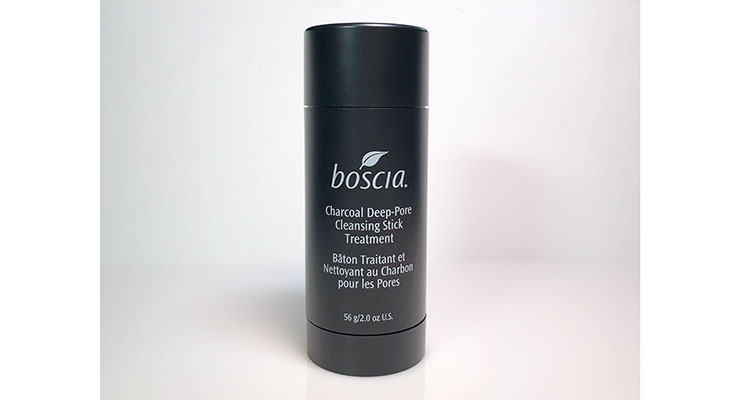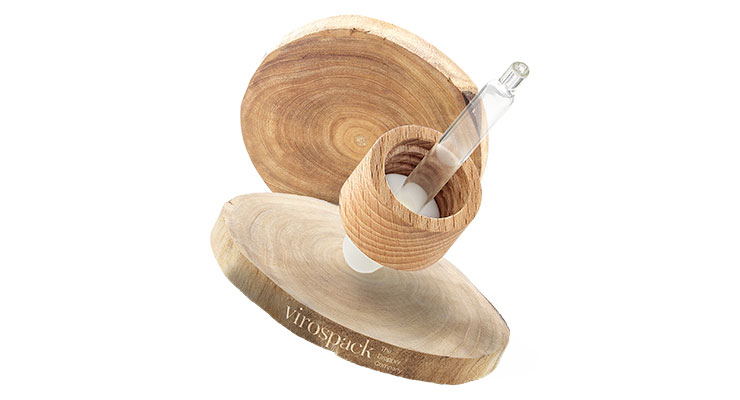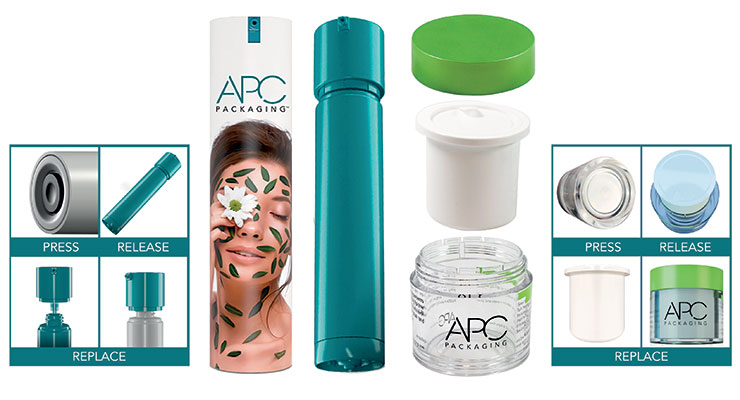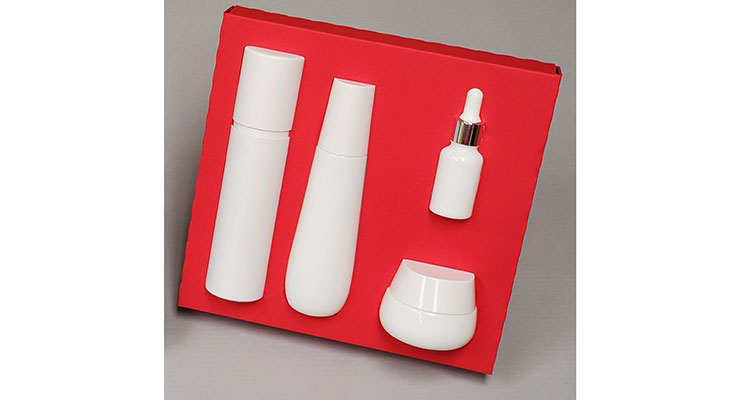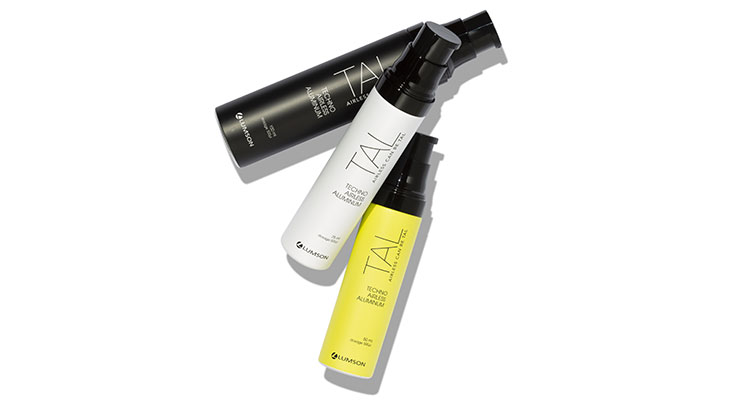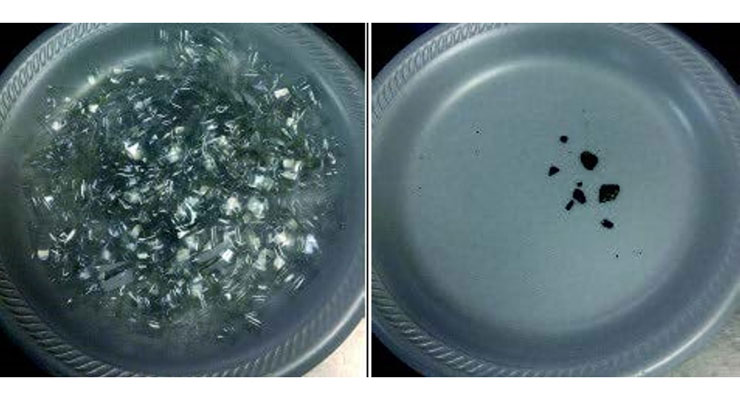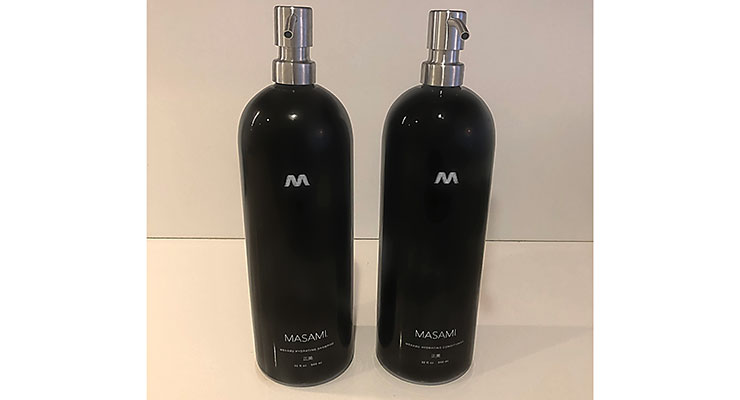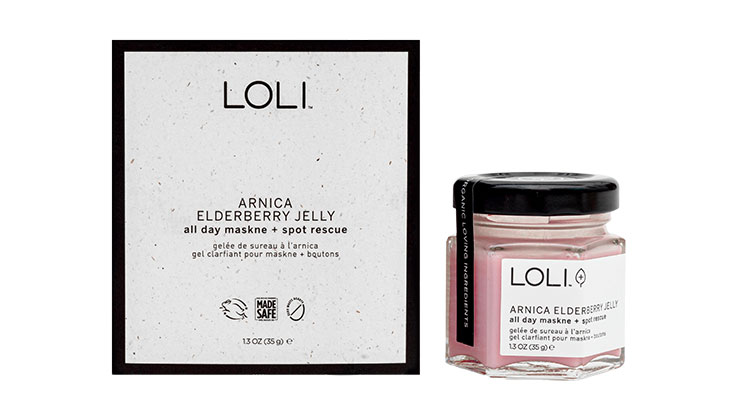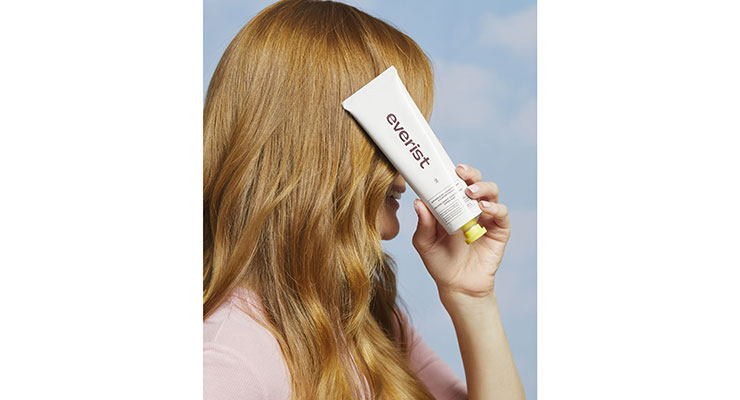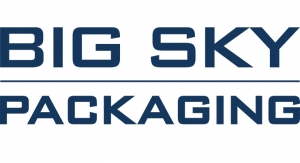Jamie Matusow, Editor-in-Chief04.27.21
If there’s one thing that everyone in the beauty industry can agree upon, it’s that there’s no perfect answer or definition when it comes to sustainability and sustainable packaging solutions.
Even the meaning of the now expanded 5R’s (once 3R’s) is interpreted differently—from Reduce, Refill/Reuse, Recycle, Replace, Respect—to Refuse, Reduce, Reuse, Re- cycle, Rot (per Zero Waste Exchange).
Further, “the word ‘sustainability’ has become overused in the industry,” according to Sarah Jindal, associate director-global beauty & personal care at Mintel, “and oftentimes not correctly, which has led to confusion on the part of the consumer.” She says this has resulted in a shift in thinking.
Now, explains Jindal, “With ‘sustainability fatigue’ increasing, ‘responsibility’ is taking over. The concept of responsibility intimates a more personal relationship between the user and their surroundings, driving more active involvement.”
Transparency Takes Control
In general, Jindal says the use of recycled materials for rigid and flexible packaging of any material type will continue to resonate with consumers, “but transparency demands will be greater across the entire supply chain.” Carbon footprint reporting is just one example of transparent tracking that consumers are looking for.”In March 2021, L’Oréal’s incoming CEO Nicolas Hieronimus emphasized the company’s commitment to transparency and increased sustainability goals—from ingredients to packaging—at the firm’s first Transparency Summit. He also said packaging will include scannable QR codes so consumers can easily learn more about a product’s ingredients.
Hieronimus said: “Consumers expect full transparency from brands and companies,” adding that especially during Covid-19, “Sustainability is more than ever an imperative.”
But while sustainability has essentially become a mandate in Beauty, the challenges are many—and similar to what the pandemic has taught the world—“we’re all in this together.”
Jess Abrams, executive director, sustainable development, Shiseido Americas, says she sees the future of sustainable packaging as a collaborative effort, with beauty “becoming an industry that brings together vendors, suppliers, and competitors alike… We are all facing similar challenges at various stages of the supply chain so why not share our learnings to better the industry?"
To move sustainable goals ahead, there will also have to be a change in consumers’ behavior and relationship to the products, particularly in regard to refillables.
Nick Dormon, founder and managing director of UK-based Echo Brand Design, says:
“Consumers have to adapt to new behaviors of beauty consumption. Today’s consumer expects so much more when it comes to convenience—personalization as well as sustainability. A new wave of products is beginning to launch designed with refill in mind. These solutions not only prevent excessive packaging waste but are creating new opportunities for a more personalized and inclusive solution.”
A Rise in Refillables
Prior to Covid-19, says Dormon, in-store shopping accounted for 85% of beauty product purchases, “but unsurprisingly, today online revenues for beauty-industry players have risen 20-30%.“The pandemic has nudged our beauty purchasing habits online and therefore the role of packaging has evolved,” he says. “Sustainable refills may capture our desire for a more personalized and streamlined solution and packaging becomes part of a subscription model, much like Nespresso with their variety of coffee pods. The common critique around beauty is that you are spending more on the packaging than the actual product. With this new method of delivery, customers will see greater value in refills with the durable device a one-off upfront cost.”
While there are no Federal level sustainable packaging restrictions yet in the U.S., several other countries have taken steps to deal with excesses.
For example, Nick Vaus, partner & creative director, Free The Birds, says the UK government has imposed a new plastic packaging tax, arriving in April 2022. He says this “will no doubt be a catalyst for positive change in this direction [re-usable, refillable packaging].
Vaus says U.S. consumers already have the chance to purchase durable, sustainable packaging from Loop and Ultra Beauty which can be refilled, limiting the plastic waste from beauty products, and “we might see more re-usable packaging here [UK] for certain products.”
The crucial point,” he says, “is that beauty brands not only need to embrace sustainable practices like biodegradable packaging and organic ingredients, they also need to be transparent about their efforts and help educate consumers on how to take care of the packaging after use to create genuine, long-term impact on the sustainability agenda.”
At GreenBlue, an arm of the Sustainable Packaging Coalition (SPC), Olga Kachook, senior manager, sees the pluses of refillables for brands, consumers and retailers. She says, “Reusable and refillable packaging is an opportunity to build. Beauty brands can consider offering inserts or refills for products, while retailers might consider offering in-store refill stations.”
Refillable packaging is an emphasis at clean beauty retailer Credo. Mia Davis, VP of sustainability and impact, says, “Packaging is going to get much more sustainable, and that is great news…companies like Credo are establishing industry-leading sustainability policies, which we hope and expect will create positive ripple-effects through the entire beauty space. One big sustainability opportunity: refillable packaging.”
Cradle-to-Cradle Certification
Jay Bolus, senior advisor of MBDC, a firm co-founded in 1995 by architect William McDonough, tells Beauty Packaging, they are currently assessing all of UK-based cosmetics company Beauty Kitchen’s products and packaging for Cradle to Cradle Certification. The certification includes working with the entire supply chain to evaluate materials down to parts per million.All of Beauty Kitchen’s products are sold in reusable packaging, with options for in-store or mail-in refill programs. Bolus explains, “They chose aluminum for most of their packaging because of its durability and ease of sanitizing, which is critical right now.”
“Reusability will be key for cosmetics packaging in the future,” says Bolus, “and the challenge is creating these products that are easy and accessible for customers to use while ensuring they feel safe doing so.”
Update— 2/2022: Maybelline's Green Edition line is the first makeup brand to be C2C Certified. It is shown above. Plus, the brand just launched its new sustainability program, Maybelline Concsious Together.
Refillables at the Ready
Suppliers in the beauty industry have been hard at work on an impressive array of refillables for brands looking to make a sustainable, impactful statement with their packaging.Josh Kirschbaum, CEO of WWP Beauty, says the company helps educate their customers on all of their options when it comes to sustainability. “Using our Eco Analyzer tool to generate real and validated eco claims can help customers identify the sustainable impact of their packaging selections, as well as educate and inform their customers of this impact.”
WWP’s new Refillable Body Stick features “a versatile and sustainable design that can be used for solid antiperspirants, skin care, color cosmetics, body care, sunblock and so much more.”
In addition to being refillable, Kirschbaum explains that the outer body of this component can be made with PCR content and the refillable cartridge features a mono-material design that also has the ability to be made with PCR content. “This gives brands looking to increase their sustainability impact more options with one component. The refill can be easily removed and replaced. This component pairs well with our other new sustainable sticks including our ColorVue Lipstick and Refillable Cheek Stick.”
At ICS, CEO Sue Nichols, says, “Being sustainable and eco-conscious are core principles,” and options continue to grow—currently including mono-material and recyclable packaging, PCR and PCR ocean plastics, refillable packaging, ICS exclusive biodegradable packaging, glass, aluminum and paper packaging, sugarcane, bio-resins, and eco-friendly decoration options.
Nichols says, “Adapting a pack to make it refillable or reusable is a highly innovative solution to make a product sustainable. The simple concept of refilling and reusing is a great way to replace single-use plastic and help reduce waste on our planet.”
ICS offers a variety of refillable packaging options, including new, sleek, refillable single- and duo-end pencils, available with a variety of applicator and tip options. “Simply unscrew the tip of the pencil and swap out the empty cartridge once all the formulation is used up, and then replace with a new pencil bullet cartridge.”
Berry Global’s Infinity Quartz PET jar has a number of sustainable advantages, according to Vali Braselton, the company’s marketing manager, Consumer Products NA. She says the jar offers a lightweight, refillable and customizable option as an alternative to glass.
“The modern, premium thick-wall design comes in PET and rPET and can be paired with our matching PET closure,” says Braselton. “The 50ml removable inner pod, available in multiple colors, includes a refillable option, and turns this already-sustainable package into a reusable solution that aligns well with beauty brands’ sustainability goals. It’s customizable thanks to a wide range of color options for the pod and multiple decoration options for the outer jar,” adds Braselton.
Rating Recyclables
According to a recent study by The Pull Agency, looking for recycling symbols on packaging is still the top behavior of consumers assessing a product based on sustainability. The agency also notes that shoppers are increasingly considering sustainability when making purchases. “Our research shows that a third of consumers (31%) always look for health & beauty brands which are sustainable, increasing to 40% in those under 25.”Consumers are also growing ever-more savvy when it comes to product and packaging claims—and are increasingly wary of “greenwashing.”
According to Credo’s Davis, green claims present challenges for brands, suppliers, consumers and retailers. However, she says, “At Credo, we’re choosing to face this head-on and be both honest and pragmatic about [the challenges]. All of these stakeholders have a role to play in moving beauty in a more sustainable direction.”
Recycle, Reduce, Replace
At Neopac, Martina Christiansen, director of sales, says they aim to provide the best solutions for their partners while maintaining a sustainable packaging approach. “To comply with the highest standards, we not only make our products recyclable, but also try to increase the amount of recycled and bio-based materials used in them. This results in perfect product protection and reduced usage of virgin materials.”For instance, Neopac’s Polyfoil MMB (mono-material barrier tube) is recycling-friendly, contains a reduced amount of virgin materials and still ensures full product safety, says Christiansen, adding “the approval from RecyClass and the SUEZ Grade A ensures that this is a real top-class solution for any supplier aiming to ‘go green’ and can even be upgraded more with metallized design.”
At NF Beauty Group, Joyce Kim, purchasing coordinator, says the company offers sustainability opportunities in three areas: refillable components; replacing virgin resin with PCR/bio-resin; and creating innovative and recycle-friendly mono-material items with the end user in mind. “Because there is no one size fits all,” Kim says, “being able to create various prospects for brands has been a key initiative for us.”
Recently, NF Beauty Group developed its Celeste Jar. Kim says this combines “themes of conscientiousness and efficiency by utilizing an airless dispensing technology within an eco-friendly approach.”
She explains: “Wanting to incubate and nurture a mono-material concept to life, we have an ongoing development that is structured around rethinking our Celeste Jar in an all PP/TPE construction that would eliminate any issues and doubts surrounding durability without compromising its original functionality as an airless jar that could accommodate various formulas.”
Labels, Shrink Sleeves & Flexible Packaging
At Overnight Labels, Don Earl, president, says, “We’ve been focused on sustainable packaging for more than a decade and are vigilant in sourcing the newest innovations. In addition to certifying as a Sustainable Green Printing Partner, we’ve built an eco-friendly packaging portfolio, which includes stocks, films, inks and adhesives.”Earl says they’re now using hemp stock as a newer pressure sensitive label option. He explains that it’s “high quality, durable and brighter than previous recyclable choices.”
In the shrink sleeve category, they’re working with a material that’s produced from recycled PET bottles. “This option is more resilient than previous shrink films,” says Earl.
For flexible packaging, they are currently working with a plastic-free compostable film product that’s heat sealable and resistant to oils and greases. Earl says, “These new products are especially relevant to beauty and personal care brands who strive to find the balance between eye-catching packaging and sustainability.”
Beauty Stick Packaging
Lombardi Design & Manufacturing (LDM) has achieved ISCC PLUS certification—a standard widely recognized for recycled and bio-based materials, according to Jack Albanese, Lombardi’s director of new business development.This certification provides traceability along the supply chain and verifies that companies meet environmental and social standards. “This will allow LDM to purchase chemically re-engineered materials and convert them into packaging certified by ISCC, creating traceability/chain of custody within a global supply chain. This supports a circular economy which is based on the concept Reduce, Reuse, Recycle.”
Lombardi’s solid stick Beauty Sticks are available as Single Stream PET for easy recyclability. This can include chemically recycled PET, says Albanese. He explains, “Chemical recycling addresses the historical shortcomings of mechanical recycling. Chemical processes are more tolerant of contamination and yield polymers that are identical to virgin resin. Resin degradation is eliminated ensuring more plastic waste is reprocessed into higher value beauty products.”
Material Innovations
Packaging material suppliers continue to excel in innovating “new” or preferred materials that lead the revolution in today’s quest for greener packaging solutions, both through consumer demand and global regulations.Materials touted by suppliers and brands interviewed for this article range from rPET to mono-materials to biodegradable mushroom sleeves. Some of these materials are being highlighted as alternatives to plastic bottles or tubes.
Virospack´s production processes also work to reduce excesses with 100% renewable energy, 100% FSC certified wood, and water, emissions and waste management. Known for their wide array of droppers and cosmetic packaging, they have now launched what first seemed “impossible” with their Natural Wood Dropper Cap, according to Rosa Porras, marketing communication manager.
Porras says it´s the first 100% natural wood dropper cap on the market—”the only fully organic, compostable, and recyclable wooden dropper cap for cosmetics, responsibly sourced.” She adds, “Thanks to its eco-design, the collar is only wood, a single piece of wood without any plastic piece or thread, or any glue, reducing two processes in its manufacturing, and the carbon footprint of the dropper, and being consequently more sustainable.”
A shift from plastic to aluminum is a feature at Montebello Packaging, where Steven Macphail, vice president sales & marketing, describes the company as a full-service manufacturer of aluminum tubes, aerosol cans and cosmetic bottles, with all products made with 1070 aluminum, which he says “is of the highest quality and endlessly recyclable.”
In the past year, Macphail says they have worked to develop and launch their new cosmetic bottle collection. “We have addressed the desire to move away from plastic bottles to our new aluminum formats,” he explains. “We have selected neck styles that will permit the application of pumps, sprayers and ROPP closures. We have three body shapes in our collection to accommodate different volume requirements and appearances.”
GEKA has introduced a variety of solutions according to Alexandre Daniellot, global sales—including bottles made of 100% PCR-PET and caps made of 100% PCR-PP. LLDPE, with a bio-based content of 84% derived from sugar cane, is used for mascara wipers. Rods are offered in 100% bio-based material delivered from the renewable castor oil plant.
Mascara applicators are offered in 100% R-TPE and recycled flock. Brushes can be made of exclusive 100% bio-based EOSgreen fiber.
Currently, Daniellot says GEKA is implementing specific software that will allow them to evaluate upfront the impact of different product concepts to be able to choose the best option in terms of sustainability.
“We’ve collaborated with many beauty brands in the development of sustainable packaging solutions for new launches. We have also re-launched our customers’ existing product line using our sustainable materials; last year, we collaborated with heritage beauty brands to launch mascara packaging solutions with glass bottles.”
In a glimpse ahead, Daniellot reveals that GEKA`s innovation and product development teams are “highly focused on the finalization of a rechargeable packaging concept, that we will introduce as a ready-to-go solution to our customers soon.”
APC Packaging also has several sustainable innovations coming out in 2021, according to Erin Gallagher, director of marketing, including their GSPP Jar & Cap series, which is 100% PP or PP PCR.
She says, “The goal of the GSPP Jar Series was to elevate the look of an all PP jar and cap.” According to Gallagher, the jar profile gives an elevated look which includes the “perfect ratio” of jar to cap ratio. “This enables brands to still meet sustainability requirements and at the same time not sacrifice on aesthetics.”
General Fibre Products has manufactured paper products for the cosmetic industry since 1933. Jay Tarantino, VP sales, says, “Most of our products support Beauty/Personal Care, Fragrance and Skin Care.”
Key products offered are corrugated folding carton liners, chip and E flute packers, and the patent pending Envirotray—a sustainable solution to plastic vacforms and other plastic items. The Envirotray is manufactured exclusively at General Fibre in New Hyde Park, NY on Long Island.
Tarantino explains that like most of their other products, the Envirotray is recyclable, biodegradable, and has FSC material options.“All tooling is made in-house and we offer standard three-week lead times from approval.” He adds, “We have seen great success with passing standard ship and drop testing in the industry.”
Understanding the importance of finding sustainable packaging solutions that meet their brand partners’ goals is a priority at SeaCliff Beauty. Brian Saputo, president, says, “SeaCliff’s approach is to offer a menu of sustainable choices that can be tailored to your specific needs and fit into your brand DNA.” These include Recyclable, Refillable, PCR and Bio Resins.
Saputo says they have been focused on the development of a mono-material pump—both atmospheric and airless. “We’ve been able to achieve a 97% all PP pump system removing metal springs and mixed materials. The biggest challenge is finding ways to improve the elasticity of PP for some of the pump components that require more flex—like gaskets and pistons. We are currently testing new PP blends that decrease stiffness and still provide zero impact to the PP recycling stream.”
At Lumson, sustainability is understood to be an all-around measurable and tangible process, says Romualdo Priore, marketing director—from design to materials, resulting in the acronym S.M.I.L.E: Sustainable, Measurable, Impact, Loyalty, Environment, chosen to describe the company’s way of being “green.”
Priore says the cosmetics market has always needed packaging able to protect the formula from the risk of possible contamination to guarantee a better safeguard of the consumer. Now, the current scenario “sees a new customer approach, which is increasingly careful in buying products with a greener beauty impact.”
Priore says this led Lumson to develop and introduce TAL, “a new ‘revolutionary’ solution that combines technical and functional features with sustainability, as the first airless system with pouch technology in an aluminum container.” Why aluminum? Because it is a light, versatile and ecological material that can be recycled countless times without losing its qualities,” says Priore.
“Realistic solutions for sustainability and the circular economy,” are the focus at FusionPKG, according to Dan Campbell, senior packaging & sustainability engineer, “so we have a variety of options to assist brands on their sustainability journey, no matter their material preferences. Our goal is to provide full-service sustainability, as a brand’s green guidance resource, to help drive the industry forward.”
Campbell says: “We are excited to share that we are in the process of reducing our reliance on virgin plastics in our most innovative, top-selling packages by incorporating premium quality chemically recycled resins. This allows for unlimited opportunity in the sustainable space, without concern of color or clarity trade-offs, mold redesigns, or reductions in quality or performance. We currently offer many of our packages in PCR, so we should have something truly groundbreaking for every brand now and in the future.”
Garrett-Hewitt offers many of the most popular materials like FSC paper, post-consumer and post-industrial recycled materials, bio-resins and refillable packaging. But, Jason Clerke, president, says, “The technology we are most excited about is Eco-Pure, an organic additive that drastically decreases the biodegrading time of any plastic that contains 0.5% Eco-Pure.”
Clerke explains: “The single simple step of adding Eco-Pure organic additive, makes any plastic biodegrade in one to ten years in a landfill or marine environment. Naturally occurring organisms recognize the additive as food and as they ingest it, they develop an appetite for the plastic around it. The byproduct that the organisms excrete is a nutrient-rich matter that will enrich the earth or water. Eco-Pure can be added through injection molding, blow molding or extrusion. It will not change the properties of the plastic like clarity, color, compatibility, molding, shelf life or its ability to be recycled. We saw this as so important to our industry, we became the industry agent.”
Al Lustrino, IPG-president, Inoac, says the company is the world leader in heavy wall PET bottle manufacturing. For more than 15 years, Lustrino says Inoac has produced bottles and jars utilizing mechanically recycled post-consumer PET for brands that make this claim part of their brand identification.” Lately, he says, Inoac has developed increasingly better streams of PCR PET.
“In coordination with one PET supplier,” says Lustrino, “Inoac now offers a chemically recycled PCR PET, which allows us to produce bottles and jars that are both chemically and esthetically indistinguishable from virgin PET.” Because of this feature, both of Inoac’s plants in Bardstown, KY and Monterrey, Mexico, have been approved by an independent sustainability association which ensures the integrity of the material management process.
Inoac is also undertaking the development of standard wall bottles and jars which will reduce the material content of PET and can be manufactured with the chemically recycled PET, says Lustrino. He adds, “These packages will benefit from the existing Inoac manufacturing processes ensuring a high level of decoration and material handling.”
Looking Ahead
Ultimately, Tony Son, general manager, SamHwa, believes, “Finding ways to increase the recycled material usage in cosmetic packaging will be key.” He says that recent chemically generated recycled plastic (PET) is a good example of improvement, adding,“This kind of new technology will be the game changer for the cosmetic packaging industry.”
As Shiseido’s Abrams affirms, “…There is no silver bullet when it comes to solving the beauty industry’s challenge to improve the sustainability of our products and packaging. The more we can align together, perhaps we can impact the recycling system, improve the availability of certain recycled materials, or even collaborate on consumer education to propel our collective efforts toward the common goal of reducing our environmental impact.”
3 Beauty Brands Focusing on Sustainability
A Refillable Solution for the Shower
Despite the challenges of glass in the bath, after almost two years of exploration, Lynn Power, CEO of MASAMI, says, ‘We landed on a large-size refillable ceramic bottle that is beautiful and sustainable. We estimate that it will replace at least, over 1000 grams of plastic.’LOLI Uses Mushrooms & Hemp
Tina Hedges, founder, LOLI Beauty, says, “Right from the start, we were first movers in the zero waste movement—from our upcycled, waterless and food grade products to our recycled, recyclable, refillable and garden compostable packaging—but still with a lens of being a DTC brand, so we could eliminate the secondary packaging."Hedges continues, "When Ulta came to us, we knew it was important to find a zero waste, garden compostable solution to traditional paperboard or plastic outer packaging. So we went back to the garden for inspiration and decided to freshly grow mushrooms into trays and then wrap these in upcycled hemp sleeves. Basically, 100% worm food."
The unique packaging for Arnica Elderberry Jelly, used for no-maskne, no-acne all day control is plastic-free and paper pulp-free.
LOLI uses a food-grade, recycled, recyclable and refillable glass jar with a recyclable aluminum cap. The label is certified home compostable. "And the innovation in the outer packaging is amazing," says Hedges. "We grow mushrooms around up-cycled hemp fibers to create the outer package and then wrap this in up-cycled hemp paper. This is the first of its kind in the market."
Additionally, LOLI is plastic negative as a brand—it has a zero-waste mission. "For every product sold, we clean up to two pounds of plastic from the universe,” says Hedges.
Everist's Waterless Hair Care
Clean, zero-waste beauty company, Everist Inc., built by beauty industry veterans Jayme Jenkins and Jessica Stevenson, features haircare concentrates designed ‘to change the way people look at eco beauty.’Cream-pastes are 3x concentrated, meaning that essentially a whole bottle of shampoo or conditioner can fit in a 100ml travel-friendly aluminum tube, ‘a first of its kind in the industry.’ Formulas are said to be ‘best in class and products maintain sustainability throughout their entire product lifecycle.’
“The unique packaging for Arnica Elderberry Jelly, used for no-maskne, no-acne all day control is plastic-free and paper pulp-free. LOLI uses a food-grade, recycled, recyclable and refillable glass jar with a recyclable aluminum cap. The label is certified home compostable."

